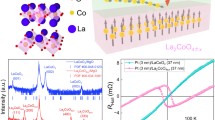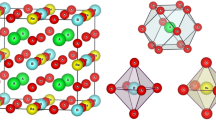Abstract
We have performed 7Li and 19F nuclear magnetic resonance (NMR) in two lithium fluorides BaLiF3 and YLiF4 to explore the possibility of a crystal NMR quantum computing device. We find that (1) both the absolute values and the angular dependences of the line widths can primarily be accounted for by the nuclear dipolar fields, and (2) the spin–lattice relaxation times are long enough for quantum computations. These characteristics indicate that these crystals can be possible candidates for quantum computing devices. We also find that, in the perovskite structures like BaLiF3, magic angles are quite effective to diminish the nuclear dipole fields, which enables us to treat some nuclei as ‘isolated’. We propose using this feature to create low-dimensional nuclear-spin networks in the crystals.
Similar content being viewed by others
Author information
Authors and Affiliations
Additional information
Received: 29 January 2001 / Accepted: 6 February 2001 / Published online: 3 April 2001
Rights and permissions
About this article
Cite this article
Goto, A., Shimizu, T., Miyabe, R. et al. Investigation of nuclear-spin couplings in the lithium fluorides as possible candidates for crystal nuclear magnetic resonance quantum computing devices. Appl Phys A 74, 73–77 (2002). https://doi.org/10.1007/s003390100858
Published:
Issue Date:
DOI: https://doi.org/10.1007/s003390100858




